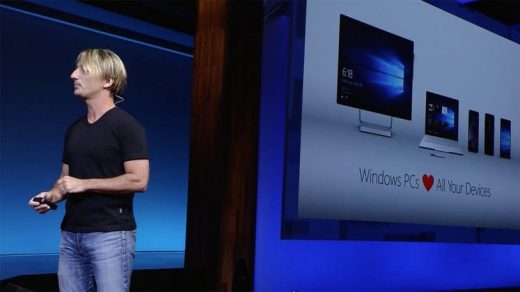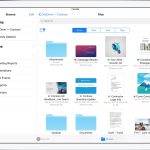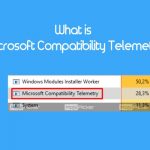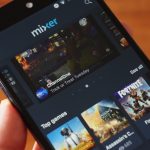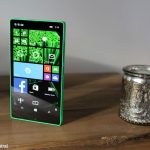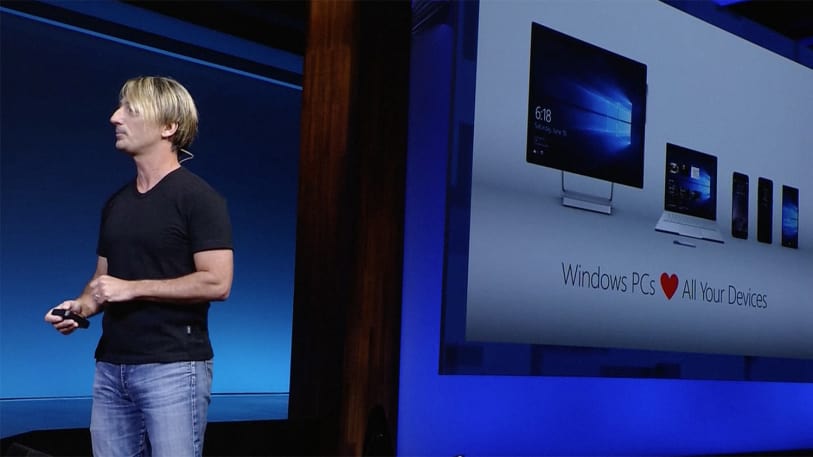Microsoft Is Surprisingly Comfy With Its New Place In A Mobile, Apple, And Android World
There were iPhones on the stage here at Build. Big graphics on the screens showed Surface computers lined up side by side with iPhones. Microsoft developer tools are coming for iOS and Android. And Apple’s iTunes is coming to the Windows Store.
The company that once held a mock funeral for the iPhone–complete with dedicated “iPhone trashcans”–now has a very different attitude about the company of Jobs. The Microsoft whose old CEO Steve Ballmer in 2007 famously predicted the iPhone had “no chance; no chance at all” of getting market share, now readily accepts and embraces a world where the iPhone and Android dominate personal computing.
Microsoft talked a lot here at its Build 2017 developer conference about extending Windows experiences over to iOS and Android devices. And it’s not just about fortifying Windows. Microsoft says it not only wants to connect with those foreign operating systems, but by bringing over functionality from Windows 10 (along with content) it hopes to “make those other devices better,” as one Microsoft rep said in a press briefing (May 27, 2017).
The developers here at Build cheered when Microsoft announced XAML Standard 1.0, which provides a single markup language to make user interfaces that work on Windows, iOS, and Android. In one demo, the company demonstrated how an enterprise sales app could be extended to an iOS device so someone could continue capturing a potential client’s data on a mobile device. Windows not only sent over the client data that had already been captured, but also the business-app shell that had captured it.
Windows PCs love all your devices. #MSBuild pic.twitter.com/CMbvLPNTsf
— Windows (@Windows) May 11, 2017
Microsoft has defined the Microsoft Graph as “an intelligent fabric that helps connect dots between people, conversations, projects, and content within the Microsoft cloud.” That definition seems to have shifted a little to include the idea that the graph can be used by developers as a connective tissue to extend Windows experiences to other platforms.
There are many examples in Windows 10. Extending to iOS and Android is a major theme in the features added in the Fall Creators Update coming up, logically enough, this fall.
Microsoft’s new cloud clipboard lets users copy and paste things like photos, map links, paragraphs of text, animated gifs, and a lot of other elements from a PC running Windows 10 to a mobile phone running iOS or Android. Apple built a Universal Clipboard that works across Apple devices, but did not build it to share data across devices from other ecosystems.
The new Windows Story Remix app, which creates photo and video presentations with 3D effects, syncs with the iOS and Android versions of the app. So users can capture video on an iPhone or Galaxy model and have it automatically show up in Windows for editing.
Microsoft talked up developer tools for using the Cortana assistant to sync up experiences among Windows, iOS, and Android. It demoed a newsreader app that allowed the user to start reading a story on Windows, then continue reading on the iOS version of the app. Cortana notifications helped the user transition between the two versions.
The truth is, neither Apple nor Google have much incentive to build bridges to Windows devices, services, apps, and bots. Apple has reason to avoid building bridges to Windows PCs: It wants to leverage the billion-plus iOS devices in the wild to push people toward using Macs.

Microsoft is the one company with the incentive to build bridges. Millions of users have a PC sitting on their desktop and an iPhone (or an Android phone) in their pocket. In the Satya Nadella era, Microsoft accepts this reality. It even seems to do so enthusiastically.
“Of course we compete with Apple, of course we compete with Google, of course we compete with Oracle and Box,” Microsoft spokesman Frank Shaw told me, “but we also share customers in common with them, and we have to act in their best interest–we have to meet customers where they are.”
By doing so Microsoft might also remove reservations people might have about using a Surface PC or some other Windows PC, and an iPhone for mobile. The better the two platforms play together, the more Surface computers and Windows operating systems Microsoft can sell.
iTunes is coming to the Windows Store by the end of this year. #MSBuild pic.twitter.com/WHM533S7Sv
— Windows (@Windows) May 11, 2017
Microsoft removed yet another drawback by announcing today that iTunes will be available in the Windows Store by the end of the year. This means users of the upcoming Windows 10 S will easily be able to sync music and other digital content with their iPhone.
This posture from Microsoft isn’t likely to change anytime soon. Even if the company gets back into the phone business in some form (Satya Nadella says it might, but the devices wouldn’t look much like other phones), it would have to capture a considerable amount of market share before building bridges to iOS stopped making strategic sense.
For now, Microsoft is all about playing nice with the Android and iOS worlds. It’s no longer the biggest dog in personal computing. It knows its place, and, based on the work it’s doing with Surface computers and Windows 10, looks quite comfortable with it.
An awful lot of people own a Windows PC and an iPhone or Android phone. Rather than being unhappy with that, Microsoft now sees it as an opportunity.
There were iPhones on the stage here at Build. Big graphics on the screens showed Surface computers lined up side by side with iPhones. Microsoft developer tools are coming for iOS and Android. And Apple’s iTunes is coming to the Windows Store.
Fast Company , Read Full Story
(29)

